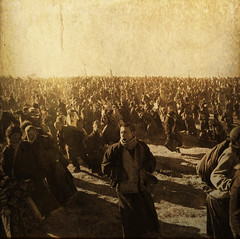Have you ever been asked to sign an NDA?
Non-Disclosure Agreements exist because of lack of trust between parties that need to discuss a subject– in fact, that’s the nature of any contract– to provide legal recourse in the case of non-compliance.
Here’s the thing though. You introduce a contract because there’s friction in a relationship. It’s an additional social and financial cost for a situation where trust doesn’t exist. It’s also a result of living in a world where we deal with strangers in everyday life, because when we have trust, we need less contracts.
So let’s talk about these social and financial costs. Stephen M. R. Covey’s Speed of Trust wasn’t a very good book (sorry), but it was right in that sense– things can happen faster and cheaper in tighter organizations.
Turns out that Ronald Coase, a Nobel prize winning economist, talked about this in the 1937 Economica article The Nature of the Firm. The reasons people enter into firms (or purpose-oriented groups of any kind, really) is because it reduces friction– social and financial costs– and improves efficiency. Otherwise, we’d all be free agents.
Now, what happens when your social graph gets massively huge? When the number of strangers around you gets reduced due to their connecting with you en masse through social networks? Friction may not be reduced to zero, but costs are reduced a little with each individual, making it extremely easy for you to get things at a cheaper social and financial cost than almost anyone.
This is the very definition of an Agent Zero— the equivalent of the It-Girl who knows everyone at the party. She gets everything for free because she knows everyone. She may be rich, but she doesn’t need money (except maybe to keep up her It-Girl status). She just needs connections– which, it has been proven, reduce costs.
Further than this– what happens when all people get just a tiny bit more connected? Friction is reduced across the board. All middleman institutions naturally become a little bit less funded, whether they be law firms or PR companies.
We don’t need them, because we’re not strangers anymore.
I hadn’t considered this when we were writing Trust Agents, but damn, does it ever make sense. Do you have connectors in your organization? They are literally like money in your pocket. Damn.

Leave a Reply